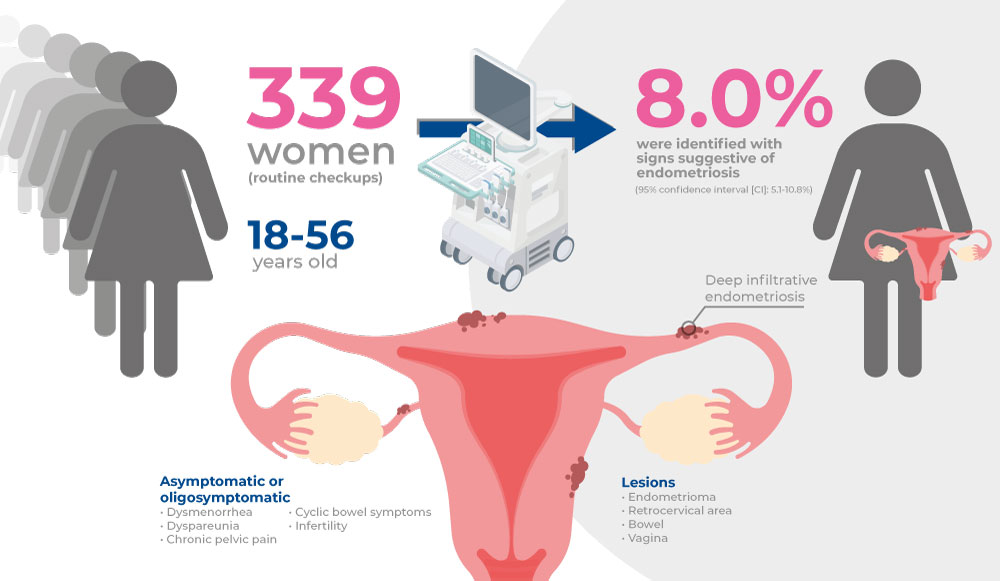einstein (São Paulo). 09/Nov/2022;20:eAO0086.
Sonographic signs of deep infiltrative endometriosis among women submitted to routine transvaginal sonography: clinical and imaging aspects
DOI: 10.31744/einstein_journal/2022AO0086
ABSTRACT
Objective
To evaluate the prevalence of sonographic signs suggestive of deep infiltrative endometriosis and endometriomas in patients referred for transvaginal sonography as part of a routine annual gynecological evaluation. We also describe the clinical and imaging aspects associated with the incidental findings of endometriosis.
Methods
This was a retrospective observational study including women (n=339; aged 18-56 years) referred for transvaginal sonography as part of a routine gynecological evaluation (without clinical suspicion of endometriosis). Patients were asked about their symptoms. In addition, they were systematically checked by an experienced radiologist for sonographic signs of deep infiltrative endometriosis (hypoechoic nodules or tissue thickening, with regular or irregular margins) in the retrocervical area, vaginal fornix, rectosigmoid junction, and bladder, as well as for ovarian endometriomas (cysts with thick walls and hypoechogenic content).
Results
Signs suggestive of deep infiltrative endometriosis or endometriomas were identified in 27 of the 339 women (8.0%; 95%CI: 5.1-10.8). Endometriomas were observed in 8 patients (2.4%; 95%CI: 0.7-4.0); 23 women had signs of lesions in the retrocervical area (6.8%; 95%CI: 4.1-9.5), 3 in the rectum and sigmoid colon (0.9%; 95%CI: 0-1.9), and 1 in the vagina (0.3%; 95%CI: 0-0.9). Six patients (1.8%) had signs of endometriosis at more than one site, and thirteen were asymptomatic. There were no significant differences in symptomatology between women with and without sonographic signs of deep infiltrative endometriosis.
Conclusion
Routine transvaginal sonography offers an opportunity to search for signs of deep infiltrative endometriosis in oligosymptomatic women particularly those not previously suspected to have endometriosis.
256

